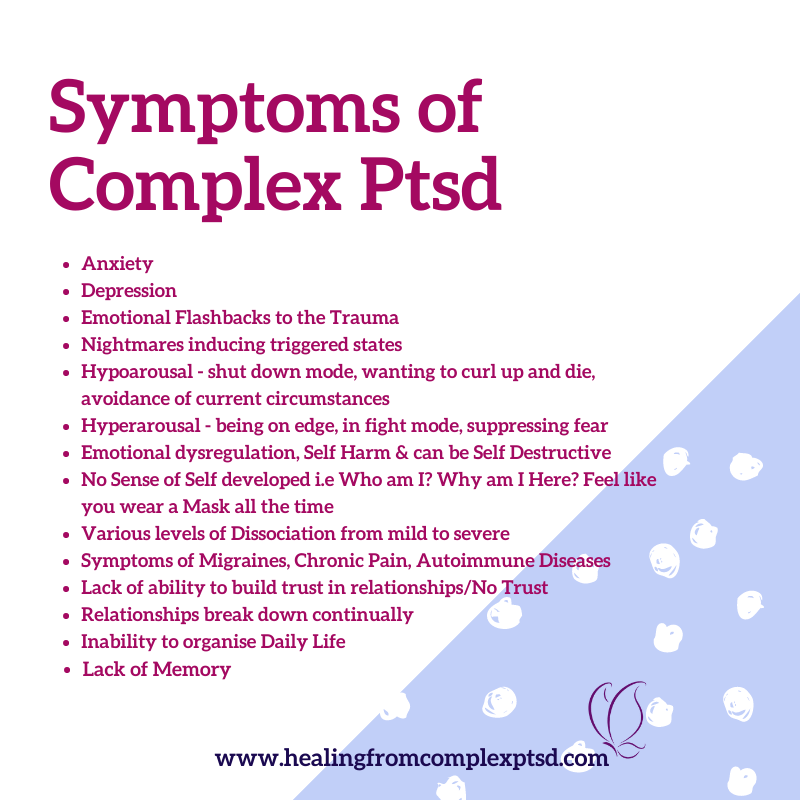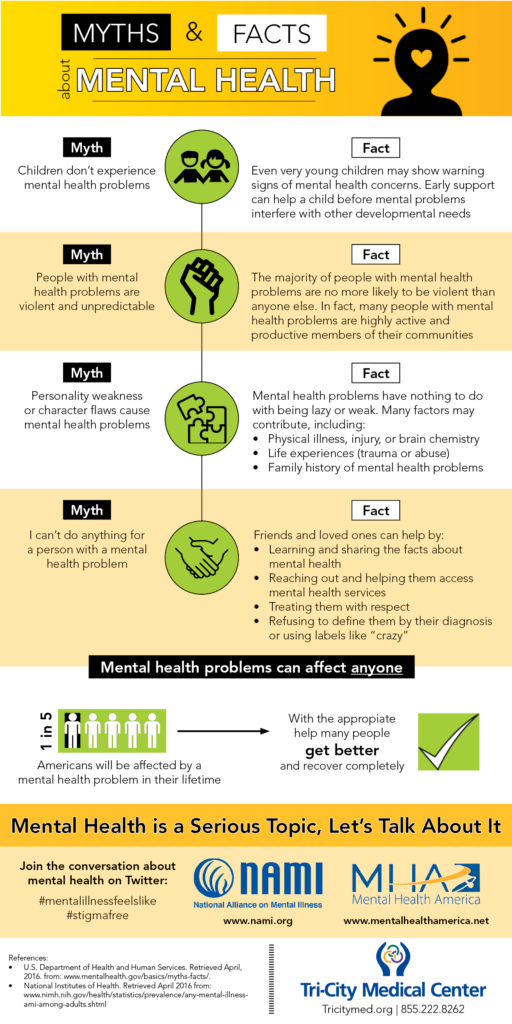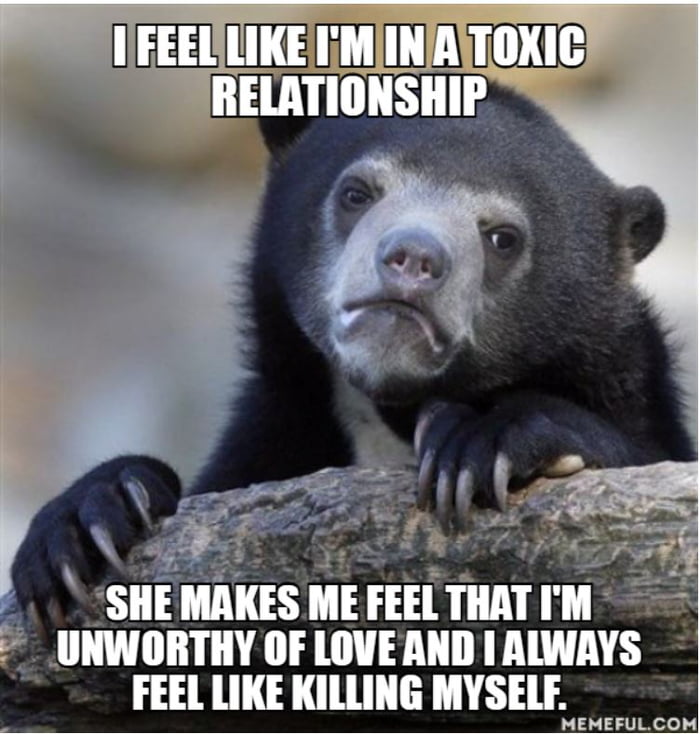Was einstein bipolar
The Mystery of Bipolar Disorder
CALL US: (617) 477-4868
July 6, 2021
Of all mental illnesses, bipolar disorder is, perhaps, the most mysterious.
Often referred to as the dark side of creativity, it disproportionately affects people otherwise known as uncommonly gifted or even geniuses.
The list of celebrities known to have bipolar disorder is long and glorious: writers Edgar Allan Poe, Ernest Hemingway, and Jack London; artists Vincent Van Gogh, Edward Munch, and possibly Picasso; movie stars Robin Williams, Catherine Zeta-Jones, and Ben Stiller
Winston Churchill was remembered by his friends as either “at the top of the wheel of confidence or at the bottom of an intense depression”.
Florence Nightingale, a social reformer renown as the founder of modern nursing, shifted between “periods of extreme productivity, creativity, and insights that go beyond what would normally be possible, and bouts of severe depression” for most of her life.
And even the genius of geniuses, Albert Einstein, was known to experience periods of extreme productivity and deep despair, which nowadays would most likely be diagnosed as bipolar.
The Cost of Bipolar Disorder
The cost of being a genius is high.
Make no mistake — bipolar disorder is a dangerous illness. It causes serious shifts in mood, energy, thinking, and behavior—from the highs of mania on one extreme, to the lows of depression on the other.
More than just a fleeting good or bad mood, the cycles of bipolar disorder last for days, weeks, or months. And unlike ordinary mood swings, the mood changes of bipolar disorder are so intense that they interfere with the person’s ability to function.
Manic Episodes and Episodes of Depression
Manic symptoms include impulsively quitting a job, charging up huge amounts on credit cards, or feeling rested after sleeping two hours.
He/she may engage in reckless sex or carelessly abuse drugs and alcohol and may enter into psychosis, being unable to tell the difference between reality and their hallucinations.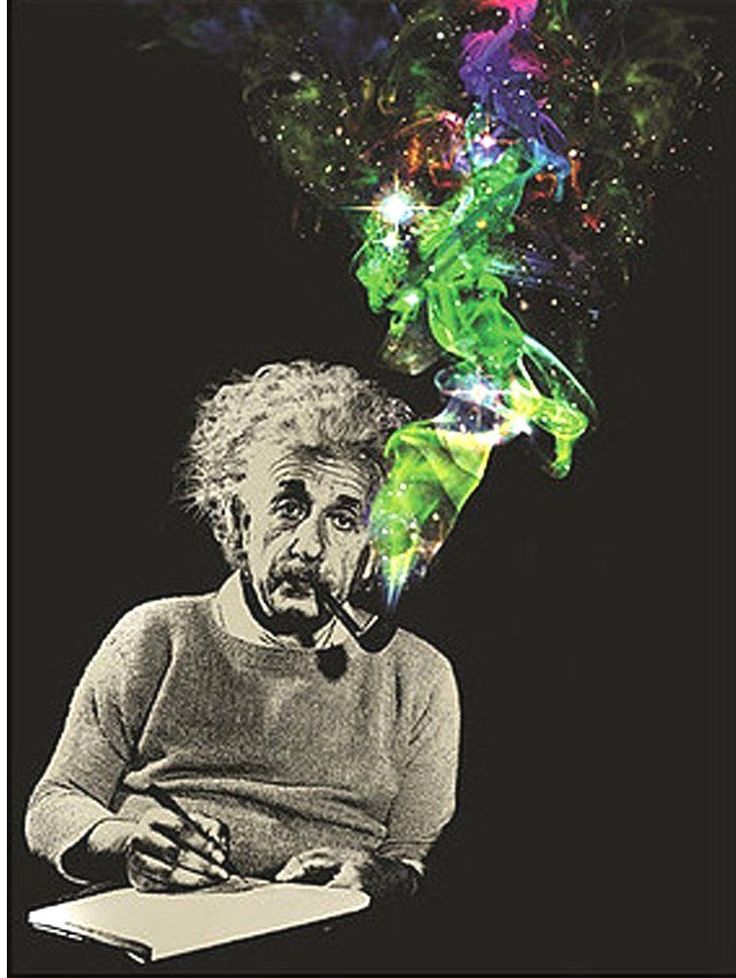
During a depressive episode, the same person might be too tired to get out of bed and full of self-loathing and hopelessness over being unemployed and in debt. At the extreme, a person with untreated bipolar disorder is substantially more likely to commit suicide.
There’s also a type of episode called hypomania. The difference between mania and hypomania is one of severity. This is usually seen in bipolar II disorder. During a hypomanic episode, a person may feel the same symptoms of mania but will not become psychotic or hallucinate.
Types of Bipolar Disorder
There are several different types of bipolar disorder.
Bipolar I disorder is the most severe, with both manic and depressive episodes.
Bipolar II is less severe, with hypomania and depression.
Cyclothymic disorder is similar to bipolar II but has episodes that are shorter and even less severe.
Bipolar | More Common Than Expected
According to the National Institute of Mental Health, bipolar disorder affects approximately 5. 7 million adult Americans or about 2.6% of the U.S. population.
7 million adult Americans or about 2.6% of the U.S. population.
Although bipolar disorder is equally common in women and men, research indicates that approximately 3X as many women as men experience rapid cycling.
Women may also have more depressive episodes and more mixed episodes than do men with the illness (Journal of Clinical Psychiatry, 58, 1995).
How Bipolar Disorder Is Diagnosed
To diagnose bipolar disorder, a mental health professional will first ask a series of questions to see if you’ve ever experienced the symptoms of bipolar disorder to see if you have depressive symptoms or episodes of mania.
If it’s the case that you have experienced mania or depression that’s in line with the symptoms of bipolar disorder, then your physician will come up with a treatment plan unique to your needs.
Bipolar Disorder | Causes, Triggers, and Treatment
Unfortunately, the mechanism of bipolar disorder remains mysterious. We know that genetic factors play a significant role.
About half of the people with bipolar disorder have a close family member with a mood disorder. A person who has a parent with bipolar disorder has a 15% to 25% chance of having the condition, which is much more than population average of 2% to 3%.
And yet, although a person with a bipolar identical twin (same genetic material) is much more likely to have the same condition, it is certainly not always the case.
Bipolar and Neurotransmitters
We know that several complex chemicals, so-called neurotransmitters or chemical messengers in the brain, such as norepinephrine, serotonin (and probably many others), are involved.
Yet how exactly they interact and what triggers their malfunction that manifests in abnormal mood swings is still not fully clear.
Bipolar at Earlier Ages
It is also remarkable that bipolar disorder is appearing at increasingly early ages. It is possible that this apparent increase in earlier occurrences is due to advanced diagnostic capabilities that were not available in the past.
But it could also be possible that this change in the age of onset may be a result of social and environmental factors. We simply don’t know.
Is There Hope for Those Suffering from Bipolar?
Does it mean that there is no hope for the people who suffer from bipolar? Not at all!
Several treatments are already available that can be used to control the mood swings, including talk therapy and medication.
Some patients respond to older medications, such as lithium, which are reliable and well-tolerated by most.
There are newer, more expensive medications that may provide greater symptom relief, but also have greater side effects. In some cases, combinations of different drugs are prescribed.
No doubt, eventually the puzzle of bipolar will be solved and the genius who will find the solution will be named a Nobel Prize winner.
For now, finding the right treatment remains a matter of identifying medication that will work for a given patient. What works for one may not work for the others.
To be successful, doctors need to have a broad spectrum of treatments. This is why the pharmaceutical industry is actively developing new medications, promising even more effectiveness with, hopefully, fewer side effects.
Several of these are in clinical trials now.
Learn More About Clinical Trials for Bipolar Disorder
Click to learn more about Boston Clinical Trials and sign up for a future Bipolar study.
Dr. Stolyar is Associate Director of Psychiatry at Boston Clinical Trials. He has conducted over thirty clinical research studies in the areas of mental health and behavioral disorders
26 Cummins Highway Boston, MA 02131
Copyright Boston Clinical Trials 2020.
All rights reserved.
BCT COVID-19 Update
+
11 Historical Geniuses and Their Possible Mental Disorders
Studies have shown that there are much higher instances of mental disorder in political leaders and creative geniuses than in the general population. And while it's impossible to be completely sure of a correct diagnosis of a historical figure, that hasn't stopped researchers from making educated guesses. Here's a speculative look at the mental health of 11 of history's big thinkers.
And while it's impossible to be completely sure of a correct diagnosis of a historical figure, that hasn't stopped researchers from making educated guesses. Here's a speculative look at the mental health of 11 of history's big thinkers.
1. ABRAHAM LINCOLN // DEPRESSION
The Great Emancipator managed to lead the country through one of its more trying times, despite suffering from severe depression most of his life. According to one Lincoln biographer, letters left by the president's friends referred to him as "the most depressed person they've ever seen." On at least one occasion, he was so overcome with "melancholy" that he collapsed. Both his mother and numerous members of his father's family exhibited similar symptoms of severe depression, indicating he was probably biologically susceptible to the illness. Lincoln is even assumed to be the author of a poem published in 1838, "The Suicide's Soliloquy," which contains the lines:
Hell! What is hell to one like me Who pleasures never knew; By friends consigned to misery, By hope deserted too?
2.
 LUDWIG VON BEETHOVEN // BIPOLAR DISORDER
LUDWIG VON BEETHOVEN // BIPOLAR DISORDERWhen the composer died of liver failure in 1827, he had been self-medicating his many health problems with alcohol for decades. Sadly, much of what he may have suffered from probably could have been managed with today's medications, including a serious case of bipolar disorder. Beethoven's fits of mania were well known in his circle of friends, and when he was on a high he could compose numerous works at once. It was during his down periods that many of his most celebrated works were written. Sadly, that was also when he contemplated suicide, as he told his brothers in letters throughout his life. During the early part of 1813 he went through such a depressive period that he stopped caring about his appearance, and would fly into rages during dinner parties. He also stopped composing almost completely during that time.
3. EDVARD MUNCH // PANIC ATTACKS
The world's most famous panic attack occurred in Olso during January 1892. Munch recorded the episode in his diary:
Munch recorded the episode in his diary:
"One evening I was walking along a path, the city was on one side and the fjord below. I felt tired and ill. I stopped and looked out over the fjord—the sun was setting, and the clouds turning blood red. I sensed a scream passing through nature."
This experience affected the artist so deeply he returned to the moment again and again, eventually making two paintings, two pastels, and a lithograph based on his experience, as well as penning a poem derived from the diary entry. While it isn't known if Munch had any more panic attacks, mental illness did run in his family; at the time of his episode, his bipolar sister was in an asylum.
4. MICHELANGELO // AUTISM
You might have wondered in the past just how someone could paint something as huge as the ceiling of the Sistine Chapel. According to a paper published in the Journal of Medical Biography in 2004, Michelangelo's single-minded routine may have been due to the disorder. According to descriptions by his contemporaries, the painter was "preoccupied with his own reality." Most of the male members of his family are recorded to have exhibited similar symptoms. Michelangelo also seems to have had difficulty forming relationships with people; he had few friends and didn't even attend his brother's funeral. All of this, combined with his obvious genius in math and art, led the researchers to believe that today Michelangelo would be considered high functioning on the autism spectrum.
According to descriptions by his contemporaries, the painter was "preoccupied with his own reality." Most of the male members of his family are recorded to have exhibited similar symptoms. Michelangelo also seems to have had difficulty forming relationships with people; he had few friends and didn't even attend his brother's funeral. All of this, combined with his obvious genius in math and art, led the researchers to believe that today Michelangelo would be considered high functioning on the autism spectrum.
5. CHARLES DICKENS // DEPRESSION
By his early 30s, Dickens was the most famous author in the world. He was wealthy and seemed to have it all. But after an unbelievably difficult childhood, which saw the author working in a boot factory and living on his own when his father was thrown in prison, Dickens would start falling into depressions with the start of each new novel. The first one to cause him problems was one of his lesser-known works, The Chimes, in 1844.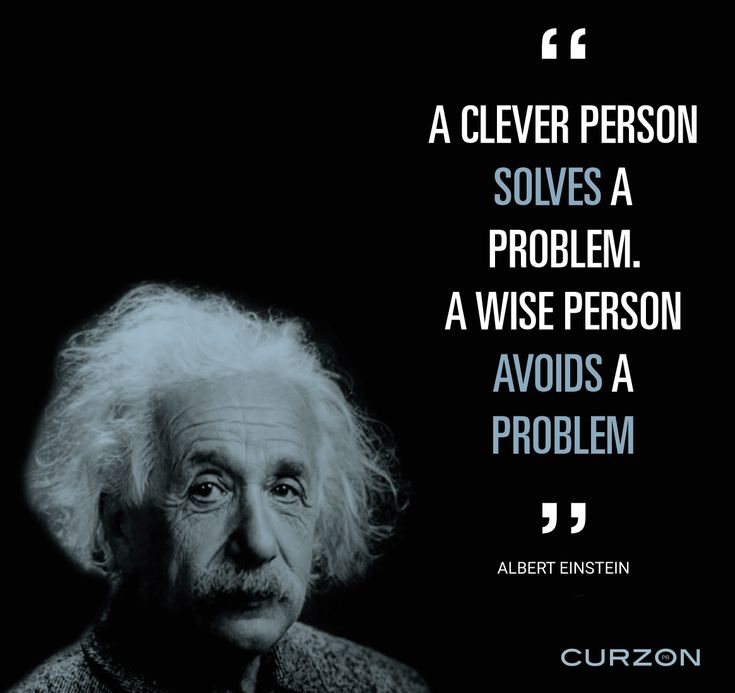 After that, Dickens' friends wrote that he became down every time he set to work on a new project, but that his mood would gradually lift until he was in a kind of mania by the time he finished. His depression worsened with age, and he eventually separated from his wife—the mother of his 10 children—to live with an 18-year-old actress. After he was involved in a train crash four years before his death, in which he was uninjured but was forced to assist dying passengers before help came, his depression seems to have finally staunched his creativity, and his previously prolific output virtually ceased.
After that, Dickens' friends wrote that he became down every time he set to work on a new project, but that his mood would gradually lift until he was in a kind of mania by the time he finished. His depression worsened with age, and he eventually separated from his wife—the mother of his 10 children—to live with an 18-year-old actress. After he was involved in a train crash four years before his death, in which he was uninjured but was forced to assist dying passengers before help came, his depression seems to have finally staunched his creativity, and his previously prolific output virtually ceased.
6. CHARLES DARWIN // AGORAPHOBIA
Scholars still debate just exactly what problems Darwin suffered from, but whatever they were, they were serious. Despite his famed five year voyage on the Beagle (and the publication it led to) making his career, Darwin was virtually incapacitated the entire time. While he concentrated on his physical symptoms as the cause of all his suffering, the constant trembling, nausea, hysterical crying, and visual hallucinations (among other things) seem to have been mostly caused by a severe case of agoraphobia that kept him virtually bedridden from the time he turned 30.![]() Darwin's fear of people meant he would even avoid conversations with his own children, writing, "I am forced to live… very quietly and am able to see scarcely anybody and cannot even talk long with my nearest relations." In at least one letter he mentions feeling like committing suicide due to the publication of On the Origin of Species, the controversy over which caused him much distress. He may have also suffered from OCD and hypochondria, as he kept meticulous records of every new or recurring symptom.
Darwin's fear of people meant he would even avoid conversations with his own children, writing, "I am forced to live… very quietly and am able to see scarcely anybody and cannot even talk long with my nearest relations." In at least one letter he mentions feeling like committing suicide due to the publication of On the Origin of Species, the controversy over which caused him much distress. He may have also suffered from OCD and hypochondria, as he kept meticulous records of every new or recurring symptom.
7. WINSTON CHURCHILL // BIPOLAR DISORDER
Like Lincoln, Churchill was a great leader dealing not only with international strife but his own mental struggles at the same time. In his 30s, he complained to his friends that he was hounded by the "black dog of depression." He sat in the Houses of Parliament and contemplated suicide. Churchill told his doctor that he had to be careful where he stood in a train station:
"I don't like standing near the edge of a platform when an express train is passing through," he told his doctor.
"I like to stand right back and if possible get a pillar between me and the train. I don't like to stand by the side of a ship and look down into the water. A second's action would end everything. A few drops of desperation."
The black dog would follow him the rest of his life. When in his mild manic phases he was personable, but his moods could change quickly. During periods of high mania he would stay up all night writing, eventually producing 43 books on top of attending to his political duties.
8. VASLAV NIJINSKY // SCHIZOPHRENIA
While not well-known today, in the early 1900s, Nijinsky was a household name. Considered the greatest male dancer of his era, he was famous for his intense performances, gigantic leaps, and ability to dance on his toes (en pointe), something uncommon among male dancers at the time. When he took to choreographing ballets, his modern take on the dance led to a riot. By the time Nijinsky was 26, the symptoms of his disease were affecting his work. He spent the rest of his life in and out of mental hospitals, often going weeks at a time without saying a word.
By the time Nijinsky was 26, the symptoms of his disease were affecting his work. He spent the rest of his life in and out of mental hospitals, often going weeks at a time without saying a word.
9. KURT GÖDEL // PERSECUTORY DELUSIONS
Gödel was a brilliant logician and mathematician, as well as a contemporary and great friend of Albert Einstein. Einstein's super-intelligence might have made him seem a little odd to the average person, but he doesn't seem to have suffered from any actual mental illnesses. Gödel, on the other hand, thought that someone was out to poison him. He was so sure of this delusion, especially later in life, that he would only eat food that his wife had cooked, and usually made her taste it first, just to be sure. When his wife was hospitalized for six months, Gödel stopped eating and starved to death.
10. LEO TOLSTOY // DEPRESSION
Tolstoy did not suffer from obvious signs of depression until middle age, but when it hit him, it hit hard. He went through serious personality changes, questioning virtually everything in his life. At times he debated giving away all of his possessions, becoming celibate, and the nature of his religious beliefs (or lack thereof). At one point he was determined to give up writing altogether, saying, "art is not only useless but even harmful." Tolstoy is a perfect example of someone who seemingly has everything brought low by this disease: despite coming from a wealthy family, being celebrated as an author, and being father to 13 children, eventually his demons drove him to seriously consider suicide. He wrote in one letter, "The possibility of killing himself has been given to man, and therefore he may kill himself." Eventually Tolstoy pulled himself out of this hole by becoming what we would now consider a born-again Christian.
He went through serious personality changes, questioning virtually everything in his life. At times he debated giving away all of his possessions, becoming celibate, and the nature of his religious beliefs (or lack thereof). At one point he was determined to give up writing altogether, saying, "art is not only useless but even harmful." Tolstoy is a perfect example of someone who seemingly has everything brought low by this disease: despite coming from a wealthy family, being celebrated as an author, and being father to 13 children, eventually his demons drove him to seriously consider suicide. He wrote in one letter, "The possibility of killing himself has been given to man, and therefore he may kill himself." Eventually Tolstoy pulled himself out of this hole by becoming what we would now consider a born-again Christian.
11. ISSAC NEWTON // BIPOLAR, AUTISM, SCHIZOPHRENIA
One of the greatest scientists of all time is also the hardest genius to diagnose, but historians agree he had a lot going on. Newton suffered from huge ups and downs in his moods, indicating bipolar disorder, combined with psychotic tendencies. His inability to connect with people could place him on the autism spectrum. He also had a tendency to write letters filled with mad delusions, which some medical historians feel strongly indicates schizophrenia. Whether he suffered from one or a combination of these serious illnesses, they did not stop him from inventing calculus, explaining gravity, and building telescopes, among his other great scientific achievements.
Newton suffered from huge ups and downs in his moods, indicating bipolar disorder, combined with psychotic tendencies. His inability to connect with people could place him on the autism spectrum. He also had a tendency to write letters filled with mad delusions, which some medical historians feel strongly indicates schizophrenia. Whether he suffered from one or a combination of these serious illnesses, they did not stop him from inventing calculus, explaining gravity, and building telescopes, among his other great scientific achievements.
5 crazy geniuses who changed the world
December 23, 2021
Dasha Krasnova
Scientists from the Karolinska Institute claim that there is a connection between creative pursuits and deviations from the mental norm. The reason for the conclusion was the statistics of anomalies in the psyche, collected among a million people.
Photo: wikipedia.orgwikipedia.org
According to scientists, people of creative professions are prone to mental illness. Most often they are prone to bipolar affective disorder, depression and schizophrenia. Rambler will tell about five famous people who turned out to be insane. nine0003
Most often they are prone to bipolar affective disorder, depression and schizophrenia. Rambler will tell about five famous people who turned out to be insane. nine0003
Video of the day
Mikhail Lermontov
Some biographers of Mikhail Lermontov believe that the poet suffered from a form of schizophrenia. He could inherit a mental disorder on the maternal side - his grandfather committed suicide, his mother suffered from neuroses and hysteria. At the university, therefore, no one communicated, so he went to the army, and then to the war, where he was distinguished by cruelty.
Contemporaries called Lermontov an evil and uncommunicative person. According to Pyotr Vyazemsky, Lermontov was extremely nervous, his moods changed sharply and polarly. Cheerful and good-natured, in a moment he could become angry and gloomy. “And at such moments he was not safe.” nine0003
Ludwig van Beethoven
German composer Ludwig van Beethoven experienced periods of bipolar disorder and was close to suicide. The creative upsurge of energy was replaced by depressive episodes. To switch and write music again, Beethoven dipped his head into a basin of ice water. The composer also tried to "treat" himself with opium and alcohol.
The creative upsurge of energy was replaced by depressive episodes. To switch and write music again, Beethoven dipped his head into a basin of ice water. The composer also tried to "treat" himself with opium and alcohol.
Albert Einstein
One of the founders of modern theoretical physics, Albert Einstein was a genius during his lifetime, but people thought he was eccentric. As a child, he suffered from a mild form of autism, so adults were sure that he was behind in development. In addition, Albert was reserved and phlegmatic. nine0003
Throughout his life, Einstein had a mild form of echolalia and repeated certain phrases two or three times, especially if he liked them.
John Nash
The prototype of the protagonist of the Oscar-winning film A Beautiful Mind, mathematician John Nash suffered from paranoia all his life. The genius often had hallucinations, he heard voices and saw non-existent people.
The wife of a Nobel laureate supported her husband and helped him to hide the symptoms of the disease, as he could be forced into treatment. This happened later, but he was able to deceive the doctors and assure them of his healing. nine0003
This happened later, but he was able to deceive the doctors and assure them of his healing. nine0003
Woody Allen
Another Hollywood genius Woody Allen is autistic. Among the favorite themes of his films are psychoanalysis and sex. All this excites him in real life.
All the director's wives complained that he constantly humiliated women, demanded sterile cleanliness in the house, forced them to cook according to the menu and commented on every step. He is currently in a love relationship with his eldest adopted daughter Sun-Yu.
People, Mikhail Lermontov, Albert Einstein, Ludwig Beethoven,
6Three genes are responsible for genius - schizophrenia, myopia and alcoholism / / Nezavisimaya Gazeta
Albert Einstein did not speak until the age of three, and he was almost expelled from school for poor performance in mathematics. Photo by RIA Novosti
In one of the latest issues of the authoritative scientific journal Nature Neuroscience, the results of a study conducted by scientists from the Icelandic company deCODE genetics were published. The main conclusion of this work is this: genetic risk factors for schizophrenia and bipolar affective disorder (BAD; perhaps more familiar to us as "manic-depressive psychosis") largely determine creativity. In other words, for people with the appropriate hereditary characteristics, it is highly likely that they will become musicians, artists, writers, the authors of the study note. And scientists, we might add. nine0003
The main conclusion of this work is this: genetic risk factors for schizophrenia and bipolar affective disorder (BAD; perhaps more familiar to us as "manic-depressive psychosis") largely determine creativity. In other words, for people with the appropriate hereditary characteristics, it is highly likely that they will become musicians, artists, writers, the authors of the study note. And scientists, we might add. nine0003
It should be noted that Iceland is a unique country in many respects, unique in terms of the depth of study of the genotypes of its fellow citizens. For example, medical records for all Icelanders have been preserved since 1915; almost every Icelandic family keeps genealogies that go back centuries for several centuries.
Moreover, back in 1998, the Icelandic parliament decided to create a universal database of all the inhabitants of the country, which includes medical information, data on the pedigree of a citizen, as well as genetic information. And in 2000, the same company deCODE genetics (supported by American investment companies and the international pharmaceutical corporation Hoffman La Roche) won the competition for the right to create such a database. It is curious that in exchange the company received for 12 years the exclusive right to commercial use of genetic information that could be obtained from the studied blood samples of almost all Icelanders. It was planned, in particular, that newly discovered genes that predispose to the development of a particular disease would be patented. This kind of patent is an interesting commodity for pharmaceutical companies developing next-generation drugs. That is, the Icelanders have made the subject of foreign exchange earnings not only fish products, but also their genome. nine0003
And in 2000, the same company deCODE genetics (supported by American investment companies and the international pharmaceutical corporation Hoffman La Roche) won the competition for the right to create such a database. It is curious that in exchange the company received for 12 years the exclusive right to commercial use of genetic information that could be obtained from the studied blood samples of almost all Icelanders. It was planned, in particular, that newly discovered genes that predispose to the development of a particular disease would be patented. This kind of patent is an interesting commodity for pharmaceutical companies developing next-generation drugs. That is, the Icelanders have made the subject of foreign exchange earnings not only fish products, but also their genome. nine0003
As we see today, the deCODE genetics company was not limited only to the study and "storage" of the genetic data of compatriots. The study, which Nature Neuroscience writes about, was based on data from 130,000 Europeans.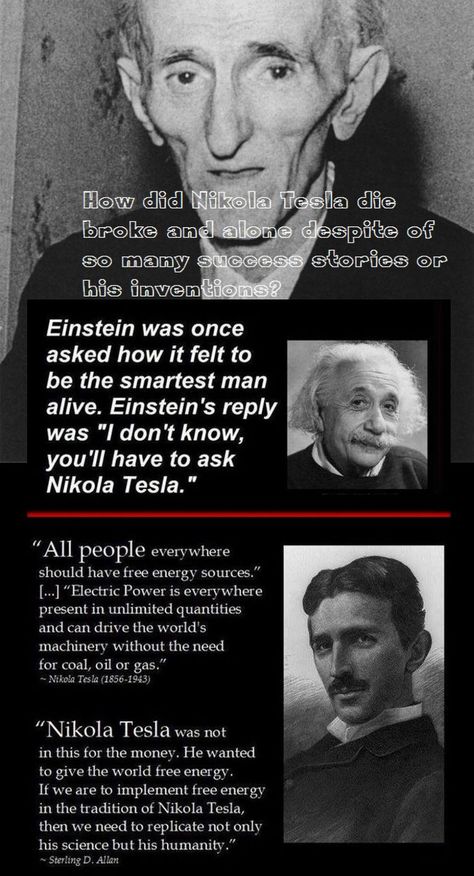 And now we can say with mathematical certainty that the same gene variants determine an increased risk of mental illness in this sample, as well as among 86,292 Icelanders. And the same variants were found with an increased (by 17%) frequency in healthy Icelanders who are members of the national creative associations of actors, dancers, musicians, artists and writers. nine0003
And now we can say with mathematical certainty that the same gene variants determine an increased risk of mental illness in this sample, as well as among 86,292 Icelanders. And the same variants were found with an increased (by 17%) frequency in healthy Icelanders who are members of the national creative associations of actors, dancers, musicians, artists and writers. nine0003
To test their findings, the scientists took survey data from 35,000 Swedes and Dutch. And here, too, everything came together: representatives of creative professions in these groups are almost 25% more likely to be carriers of the genes for schizophrenia and bipolar disorder. Conclusion: Genetic factors that increase susceptibility to schizophrenia and bipolar disorder also have a positive effect on the creative abilities of perfectly healthy people.
In fact, scientists around the world have been approaching similar conclusions for a long time. “The fact that there are connections, moreover, unexpected ones, between some mental, hormonal and biochemical characteristics of a person, in particular, genetically determined, can no longer be denied,” noted Vladimir Pavlovich Efroimson, an outstanding Russian geneticist, in his book “Genetics of Ethics and Aesthetics” ( nineteen08–1989).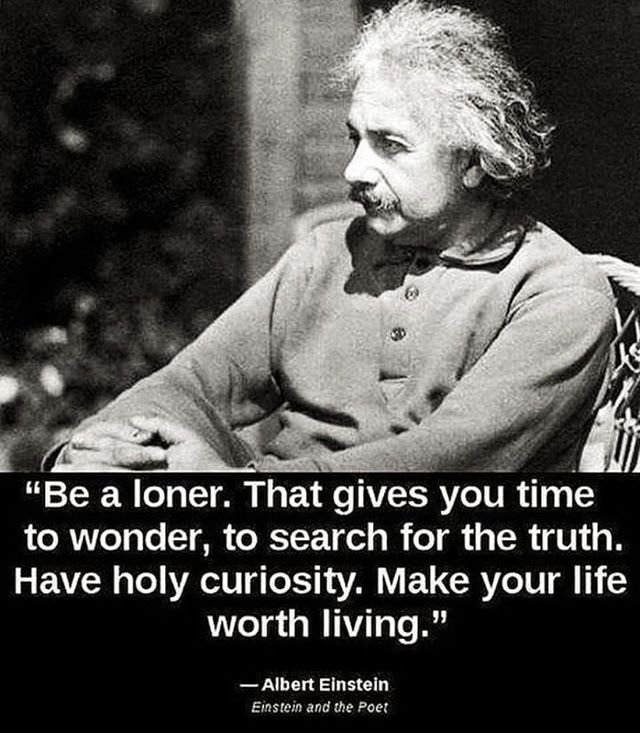 He even proposed a scale of mental norms (let us emphasize this - norms!), On one pole of which are the so-called schizoids. Here is the description Efroimson gives to people with such a psychotype: “Secluded in themselves (introverted), weakly contact, abstractly thinking people, weakly and inadequately reacting to external events, but living a very rich inner life. Reclusion and detachment are their weak point, they often give rise to their failures; on the other hand, a special ability for concentrated concentrated thinking no-no yes puts forward from their ranks such creators as Immanuel Kant, great mathematicians, physicists, poets ”(hereinafter, my italics. - A.V.). nine0003
He even proposed a scale of mental norms (let us emphasize this - norms!), On one pole of which are the so-called schizoids. Here is the description Efroimson gives to people with such a psychotype: “Secluded in themselves (introverted), weakly contact, abstractly thinking people, weakly and inadequately reacting to external events, but living a very rich inner life. Reclusion and detachment are their weak point, they often give rise to their failures; on the other hand, a special ability for concentrated concentrated thinking no-no yes puts forward from their ranks such creators as Immanuel Kant, great mathematicians, physicists, poets ”(hereinafter, my italics. - A.V.). nine0003
The eminent Nobel Prize-winning physicist Carl Sagan remarked as early as 1977: "Science can be characterized as paranoid thinking applied to nature: we are looking for natural conspiracies, connections between seemingly disparate facts."
Without agreeing with him, the American researcher A. Mahoney defined science as a profession in which "certain forms of paranoia ... contribute to success."
Mahoney defined science as a profession in which "certain forms of paranoia ... contribute to success."
There are a huge number of historical examples confirming these deliberately defiant statements. Let's say Albert Einstein was almost expelled from school for failing... in math. However, Einstein was a physicist in the purest, crystallized form, so to speak. But the schoolboy Ernst Rutherford, a future physicist who became famous for his work in the field of radioactivity and a Nobel laureate, was sent home by the teacher with a note for his parents: “Don’t send this idiot to school again, nothing good will come of him anyway” ...
Corresponding Member of the Russian Academy of Sciences, Deputy Director of the Institute of Psychology of the Russian Academy of Sciences Andrey Yurevich in his book "Social Psychology of Science" cites completely "shocking" data. “Outstanding personalities often suffer from other somatic diseases, the side effect of which is the acceleration of metabolism, and therefore increased brain stimulation,” Yurevich writes. – J. Karlsson (1978), based on an analysis of the biographies of prominent people, formulated a theory according to which their creative abilities are inherited and predetermined by three genes: schizophrenia, myopsia (nearsightedness) and ... alcoholism. … According to Karlsson, any of the corresponding genes is necessarily present in geniuses - either in a dominant or in a recessive form. nine0003
– J. Karlsson (1978), based on an analysis of the biographies of prominent people, formulated a theory according to which their creative abilities are inherited and predetermined by three genes: schizophrenia, myopsia (nearsightedness) and ... alcoholism. … According to Karlsson, any of the corresponding genes is necessarily present in geniuses - either in a dominant or in a recessive form. nine0003
As a result, for example, Einstein did not suffer from alcoholism, but was a carrier of this gene, which manifested itself in his drunken son.
But only an unprepared public, which perceives scientists as some kind of celestials, can shock these conclusions. From the very beginning, geneticists approached this problem from a pragmatic position.
In 1921-1922 in St. Petersburg, one of the first domestic geneticists, Yuri Filipchenko, conducted an unprecedented study for those times among the outstanding scientists of Petrograd. Having interrogated with the help of specially prepared extensive (several hundred questions) questionnaires of almost all scientists of the city on the Neva, Filipchenko came to the following conclusions: “The scourge of purely Russian families is alcoholism, which occurs almost one and a half times more often than it can be expected: 51%. ..
..
On the contrary, among foreigners alcoholism occurs three times less than expected, and all other diseases, especially tuberculosis, are somewhat below the norm.
There is a medical joke: "With schizophrenia, you will never be alone." But the disease is by no means a joke. In Russia, for example, 1% of the population suffers from schizophrenia. According to research by the Beijing Suicide Research and Prevention Center, more than 4 million Chinese people have schizotypal disorders. There is even a hypothesis that schizophrenia is a contagious disease. At least an epidemiological study carried out in the early 2000s in Moscow showed that among the relatives of schizophrenics people with mental disabilities - 44%. nine0003
And at the same time, there is still no satisfactory definition accepted by all scientists and physicians of what schizophrenia is. That is why any new research that brings us closer to unraveling the mysteries of this mental illness is so valuable. Candidate of Psychological Sciences Alena Ivanova emphasizes: “In patients with schizophrenia of any form, specific thinking disorders are always detected. But that doesn't mean they are stupid. On the contrary, the patients who participated in my studies were very smart - for example, students of philosophy and mathematics, translators. It's funny that the topic of Alena Ivanova's Ph.D. thesis was formulated as follows: "Violations of the sense of humor in schizophrenia and affective disorders." nine0003
Candidate of Psychological Sciences Alena Ivanova emphasizes: “In patients with schizophrenia of any form, specific thinking disorders are always detected. But that doesn't mean they are stupid. On the contrary, the patients who participated in my studies were very smart - for example, students of philosophy and mathematics, translators. It's funny that the topic of Alena Ivanova's Ph.D. thesis was formulated as follows: "Violations of the sense of humor in schizophrenia and affective disorders." nine0003
It turns out that with various forms of schizophrenia one can study philosophy and mathematics. Least. “With sluggish schizophrenia, there are often no restrictions at all,” Ivanova explains. – But even with rough forms of schizophrenia, this is quite real. The fact is that schizophrenia does not violate formal logic. On the contrary, formal logic may even be better developed in these patients ... Thinking in patients with schizophrenia is disturbed according to a different principle. This is called "distortion of generalization processes." That is, they make generalizations according to some implicit signs. nine0003
This is called "distortion of generalization processes." That is, they make generalizations according to some implicit signs. nine0003
I had this conversation with Alena Ivanova back in 2007. I will give one more quote from it, ideally suited to our today's informational occasion. So, what is it - "implicit signs"?
“A typical example,” explains Alena Ivanova. - A patient with schizophrenia is offered to compare different concepts - what they have in common, what is different. And the patient says that the shoe and the pencil are very similar objects. From an ordinary point of view, these are very distant concepts. But the patient is surprised: “How! Both of them can write something: with a pencil - on a piece of paper, with the toe of a shoe - in the sand. nine0003
This kind of thinking is correct in principle. From the point of view of formal logic, everything is correct! And patients with schizophrenia, making generalizations, rely on these criteria. By the way, due to this, there is a convergence of schizophrenia with genius, because creativity is also based on some unexpected generalizations, the generation of some unusual metaphors ”. ..
..
No wonder, slightly ironically, Andrey Yurevich, as it were, makes the final diagnosis: “If you don’t drink, don’t wear glasses, are not prone to schizophrenic oddities, and, moreover, none of your ancestors were noticed in all this, it’s better to choose another profession for yourself, because you are not destined to become a scientist.” nine0003
Reassures - if you need to reassure someone - one thing: the very phenomenon of the emergence of science, the scientific way of knowing the world around us in some modern hypotheses is interpreted as a global reaction of society to mass neurosis. And science, by definition, tries - and sometimes quite successfully - to bring into a system, to curb the chaos surrounding a person and the associated feeling of powerlessness in the face of uncertainty. Until then, of course, until science itself begins to be “treated”, as is the case with the reform of the Russian Academy of Sciences. After all, they can heal to death ..
